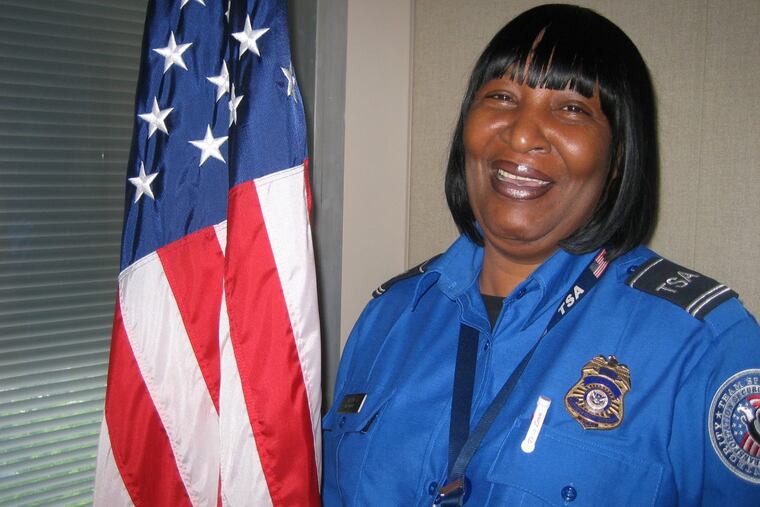How CPR training helped this TSA officer save a man's life at Philly airport
I went through extensive CPR training three years ago, but never had to use my skills until this March when I found an unresponsive man at the International Arrivals Hall.

On Thursday, March 15, I saved a man's life.
The day started out much like any other. I reported to work at the Philadelphia International Airport (PHL) where I've worked as a TSA Transportation Security Officer (TSO) for 15 years.
Becoming a TSO requires a specific type of training.In addition to keeping millions of airline passengers safe from threat or danger, many of us take it upon ourselves to also learn cardiopulmonary resuscitation (CPR) to revive passengers who might suffer from a cardiac arrest. I went through extensive training three years ago, but never had to use my CPR skills until that day in March.
I was in the International Arrivals Hall at PHL when a colleague, Stephanie Davis, pointed out a man who was slumped over in a chair. Concerned with his appearance, we approached the man and attempted to communicate with him to see if he was alright.
When he did not respond, I immediately checked for a pulse, which I was unable to detect. It quickly became clear to us that this man was in cardiac arrest; he was unresponsive, had no pulse, and was not breathing. I was panicked, but thankfully, my CPR training kicked in. With Stephanie's help, we safely got the man onto the floor to begin performing CPR, and asked another colleague to call the airport Emergency Medical Team (EMT) for assistance. In the meantime, we solicited for help and were fortunate when a U.S. military medic stepped in to help us.
I knew that we had to act fast and make sure blood was still circulating through the man's heart and oxygen was reaching his brain in order to keep him alive.
Stephanie and I retrieved a nearby Automatic External Defibrillator (AED) device to shock the man's heart back into rhythm. We began administering AED shocks and alternately performing CPR by pressing hard and fast on the center of his chest.
During this time, I was able to identify the man's heart medication in his personal belongings, which would be critical information for the EMTs.
When the EMTs arrived, they continued CPR. After the man was transported to safety, I was able to gather the flight information of his wife who was arriving to the airport so that she would be able to reunite with her husband as soon as possible.
Thanks to our fast action and CPR training, we were able to save that man's life. He had a heart attack but would make a full recovery, suffering no permanent damage to his heart or his brain.
Every year, more than 350,000 cardiac arrests occur outside of the hospital, and more than 20 percent occur in public places like the airport, according to the American Heart Association. The survival rate for cardiac arrests outside of the hospital is only 10 percent, as these victims often rely upon friends, family or even strangers who are not trained in CPR to save their lives. CPR, especially when performed immediately, can double or triple a cardiac arrest victim's chance of survival.
In times of crisis when fast action is critical and CPR is required, it's important to remember two steps:
Call 911
Push hard and fast in the center of the chest
That's all it can take to save a life.
Jackie Hatter-Wilson lives in University City with her son.
A message from the America Heart Association: Every year, the American Heart Association recognizes National CPR & AED Awareness Week June 1-7. During this time, we shine a spotlight on how lives can be saved if more Americans know CPR and how to use an AED. Our goal is to double the current bystander CPR rate by the year 2020. On June 1, we will host a free CPR training event on the lawn at the Independence Visitor Center from 11 A.M. to 1 P.M. Learn more at cpr.heart.org.